Stunning new images of Jupiter reveal atmosphere details in different light (video)
Watch Jupiter's famous superstorm disappear in infrared images from NOIRLab.
Newly processed images captured by the Hubble Space Telescope and the Gemini North observatory in Hawaii reveal details of the turbulent atmosphere of Jupiter in different wavelengths, helping scientists to figure out what drives the formation of the gas giant's massive storms.
Scientists have processed the images — captured in infrared, visible and ultraviolet wavelengths — to allow interactive side-by-side comparison of the different views of the clouds above the gas giant.
The changing appearance of the planet in different wavelengths allows astronomers to gain new insights into the behavior of Jupiter's atmosphere. Strangely, the Great Red Spot, the giant superstorm that persists south of Jupiter's equator, is very obvious in the visible and ultraviolet light wavelengths but almost blends into the background the infrared.
Video: See Jupiter's 'Great Red Spot' in new visible, infrared and UV views
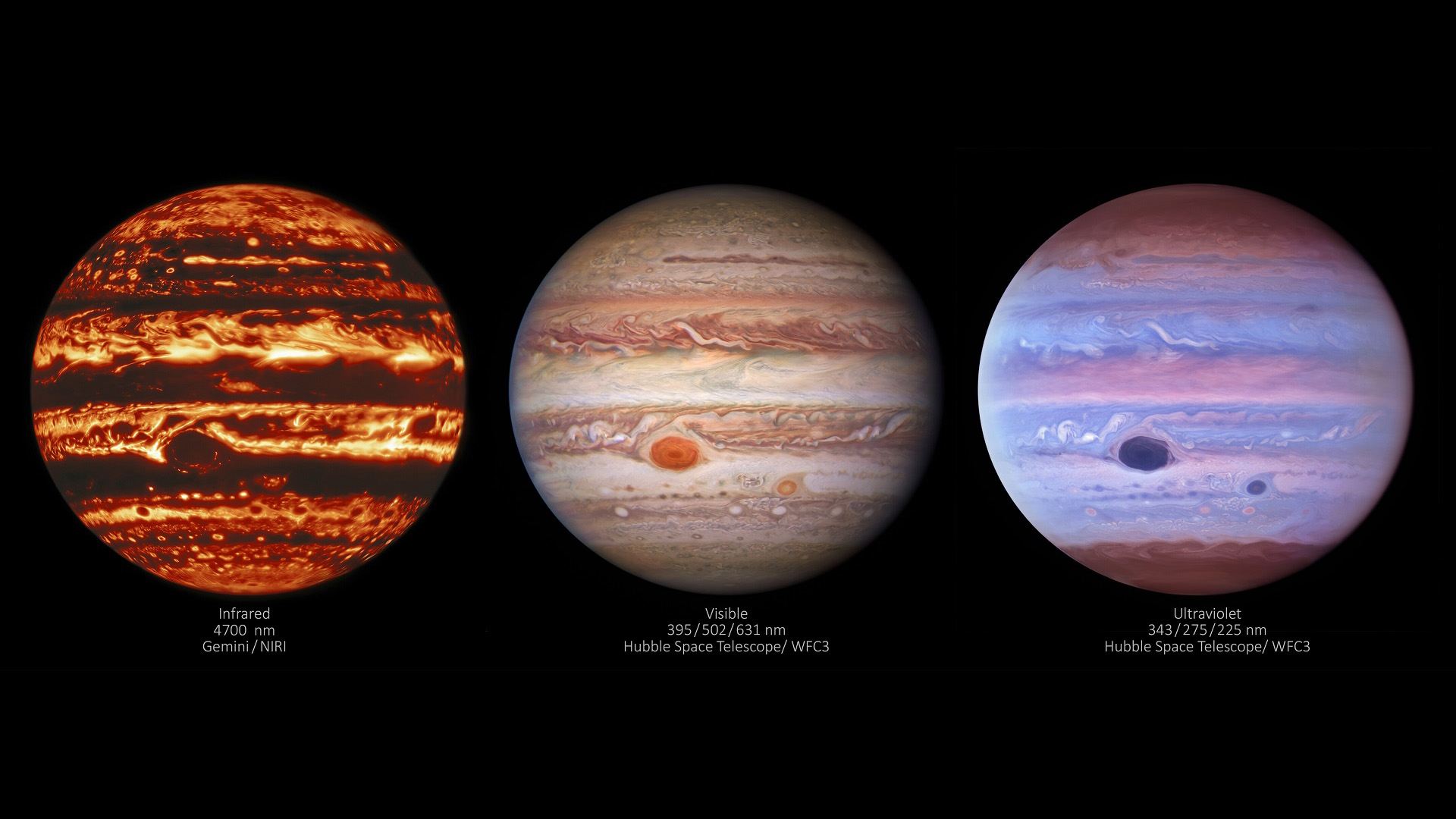
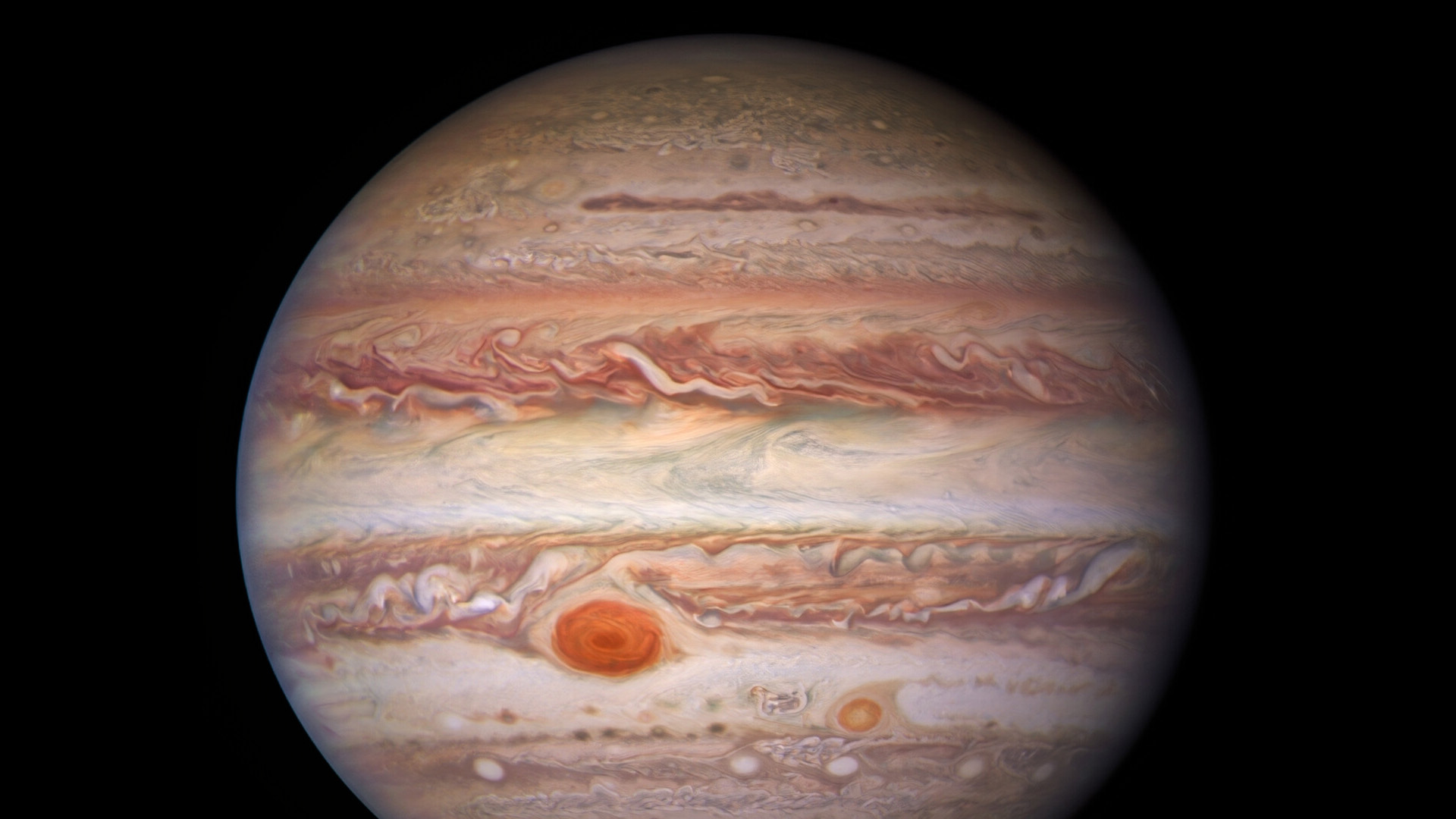
Jupiter in visible light as captured by the Hubble Space Telescope.
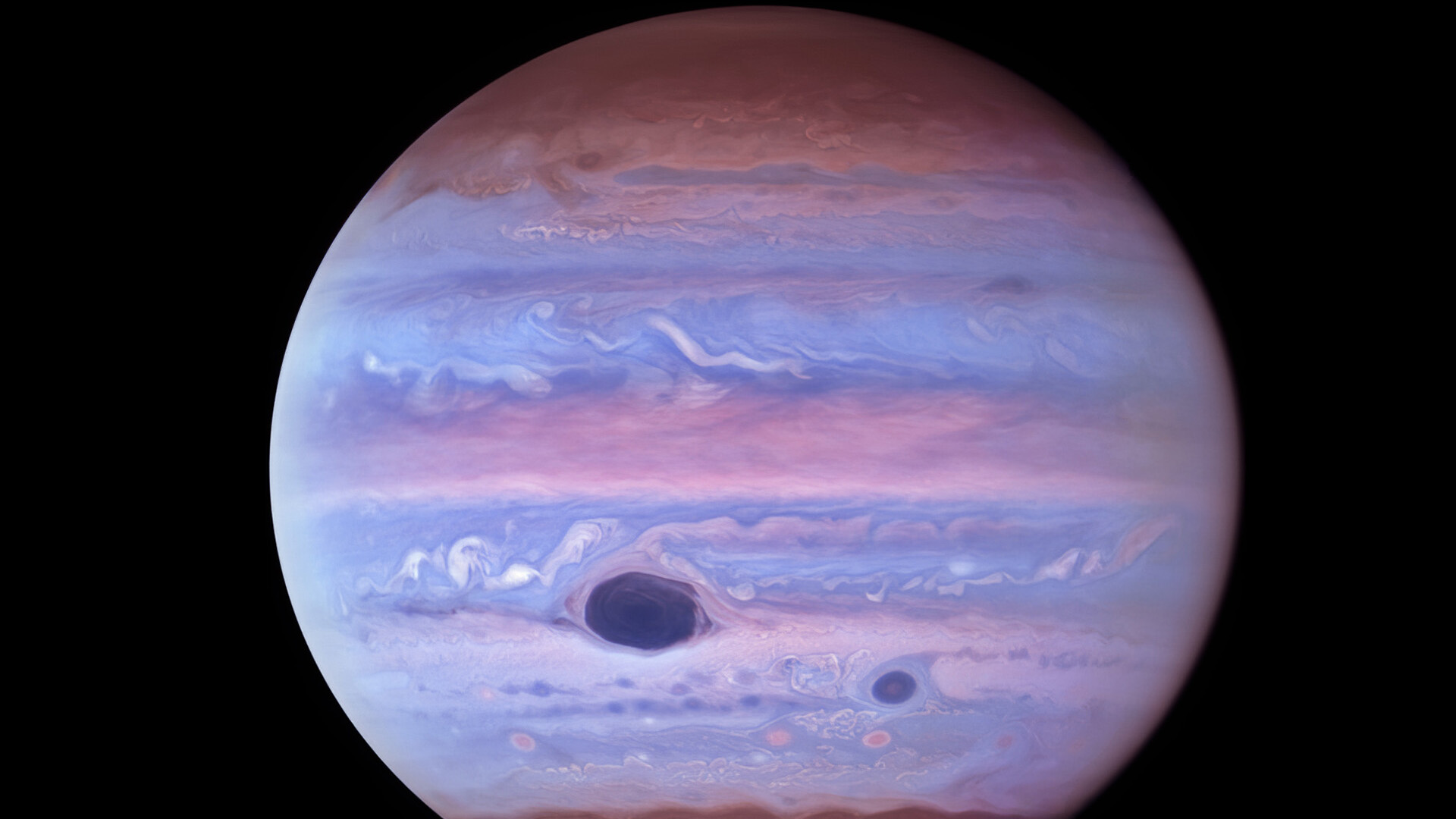
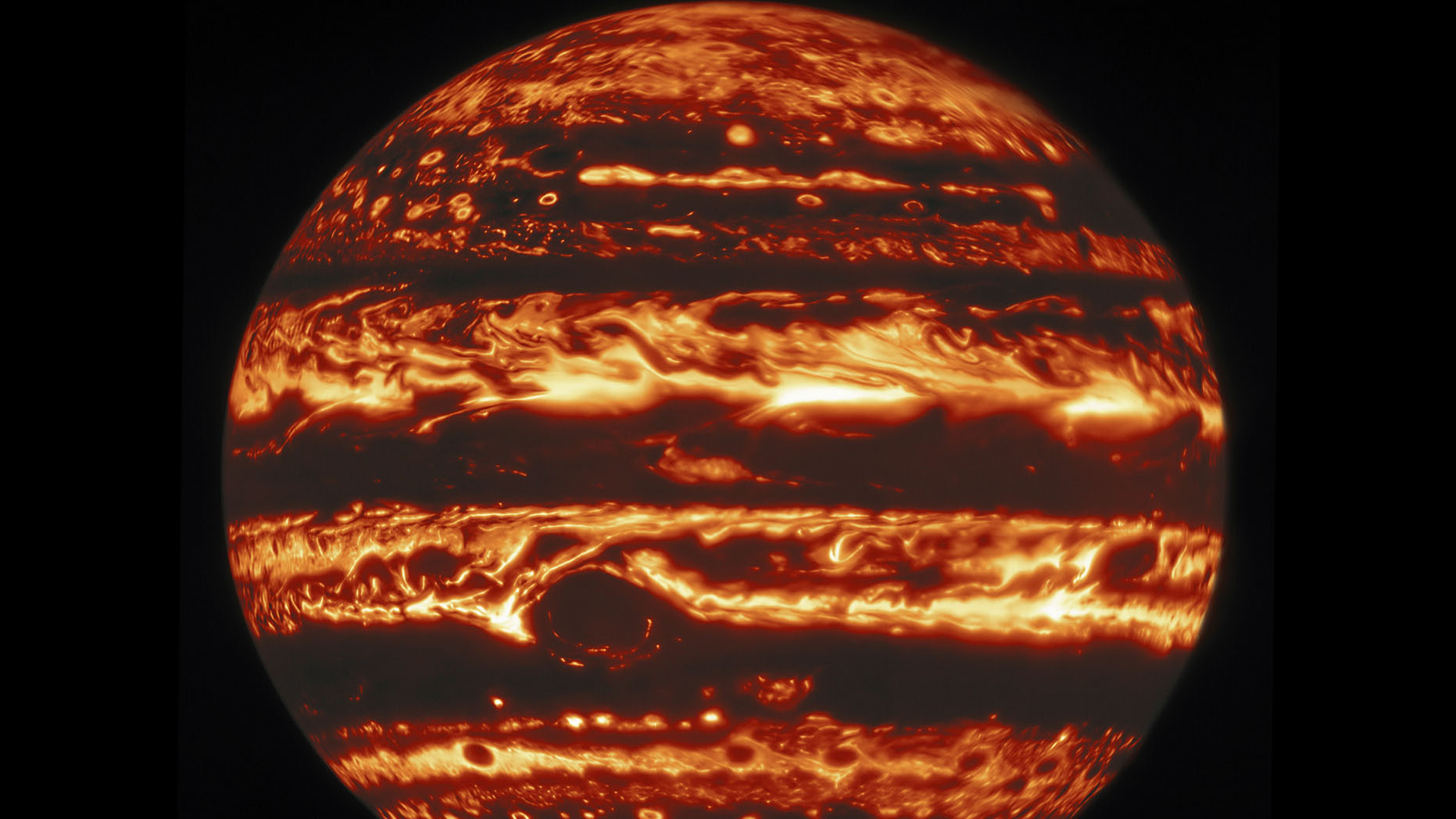
Jupiter in infrared light
The comparison between the three types of wavelengths also reveals that the dark region representing the Great Red Spot in the infrared image is larger than the corresponding red oval in the visible image. The discrepancy is caused by the fact that each of the imaging techniques captures different properties of the planet's atmosphere, according to a statement by the U.S. National Optical-Infrared Astronomy Research Laboratory (NOIRLab), which released the images on Tuesday (May 11).
While the infrared observations show areas covered with thick clouds, the visible and ultraviolet images highlight locations of the so-called chromophores, which are molecules that absorb blue and ultraviolet light, thus giving the spot its characteristic red color.
On the other hand, Jupiter's counter-rotating bands of clouds are clearly visible in all three views.
Get the Space.com Newsletter
Breaking space news, the latest updates on rocket launches, skywatching events and more!
The images were captured simultaneously on Jan. 11, 2017. The ultraviolet and visible views were taken by the Wide Field Camera 3 on the Hubble Space Telescope, while the infrared photo was captured by the Near-Infrared Imager (NIRI) instrument at Gemini North in Hawaii.
Related: Fly over Jupiter in this stunning video from NASA's Juno spacecraft
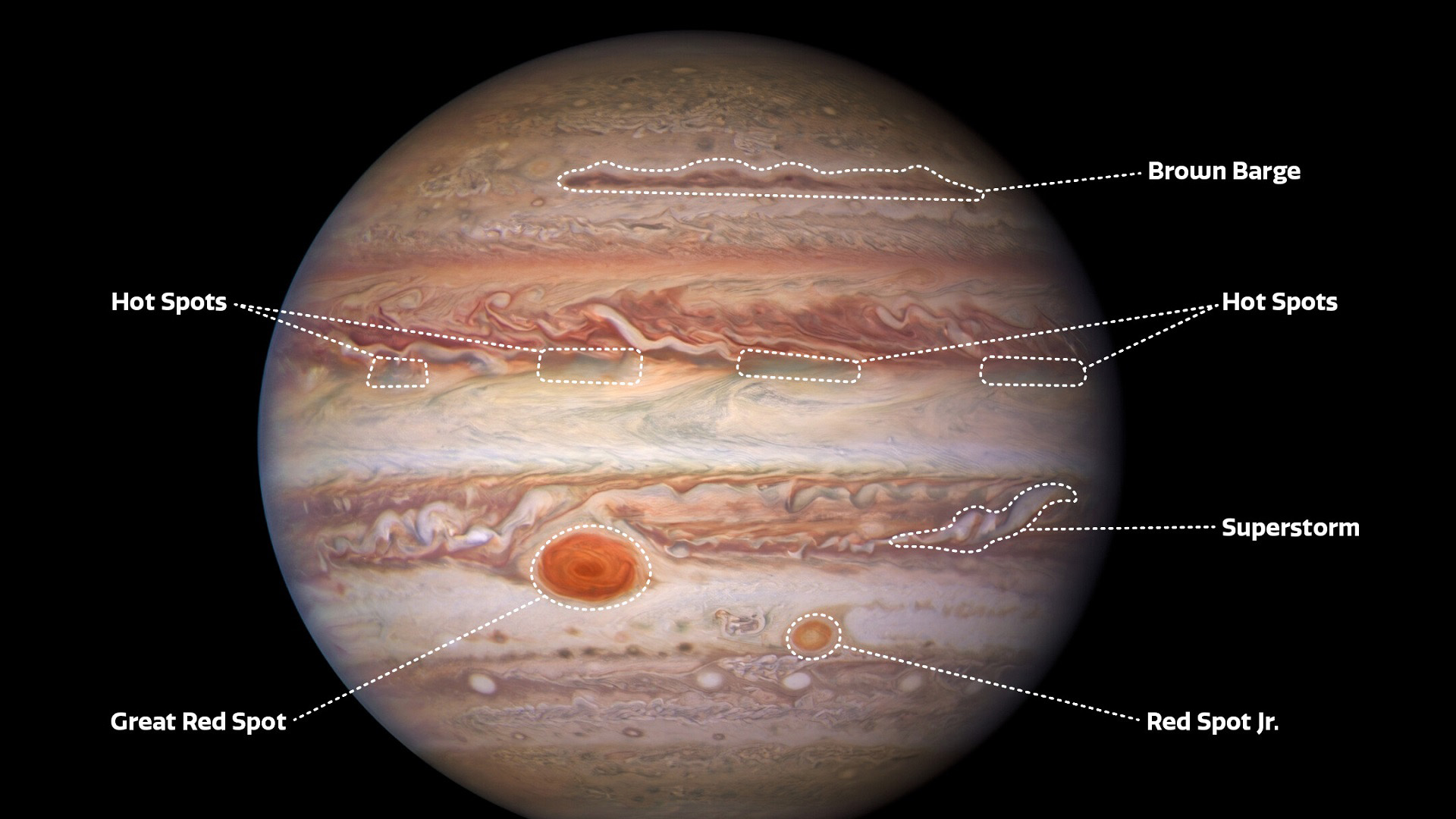
In addition to the Great Red Spot, the Hubble images also reveal the smaller Red Spot Jr, which formed in 2000 when three similar-sized storms merged southwest of the larger superstorm. Just like the Great Red Spot, the "Junior" is barely visible in the infrared wavelength, disappearing into the larger band of cooler clouds.
Unlike the red spots, a cyclonic vortex can be seen prominently in the infrared image, spreading from east to west. This nearly 45,000-miles-long (72,000 kilometers) series of vortices, appears like a bright streak in the northern hemisphere of the planet.

At visible wavelengths the cyclone appears dark brown, leading to these types of features being called brown barges in images from NASA's Voyager spacecraft, which flew past the gas giant in 1979. At ultraviolet wavelengths, however, the feature is barely visible underneath a layer of stratospheric haze, which becomes increasingly dark toward the north pole.
Scientist Mike Wong, of the University of California, has further compared the images with radio signals detected by NASA's Juno spacecraft currently studying the planet. Those radio signals denote lightning in Jupiter's atmosphere. By combining the three types of images with the lightning data, Wong and his team were able to probe various layers of the cloud structure to gain a better understanding of the formation processes behind Jupiter's massive storms.
Follow Tereza Pultarova on Twitter @TerezaPultarova. Follow us on Twitter @Spacedotcom and on Facebook.
Join our Space Forums to keep talking space on the latest missions, night sky and more! And if you have a news tip, correction or comment, let us know at: community@space.com.

Tereza is a London-based science and technology journalist, aspiring fiction writer and amateur gymnast. Originally from Prague, the Czech Republic, she spent the first seven years of her career working as a reporter, script-writer and presenter for various TV programmes of the Czech Public Service Television. She later took a career break to pursue further education and added a Master's in Science from the International Space University, France, to her Bachelor's in Journalism and Master's in Cultural Anthropology from Prague's Charles University. She worked as a reporter at the Engineering and Technology magazine, freelanced for a range of publications including Live Science, Space.com, Professional Engineering, Via Satellite and Space News and served as a maternity cover science editor at the European Space Agency.








